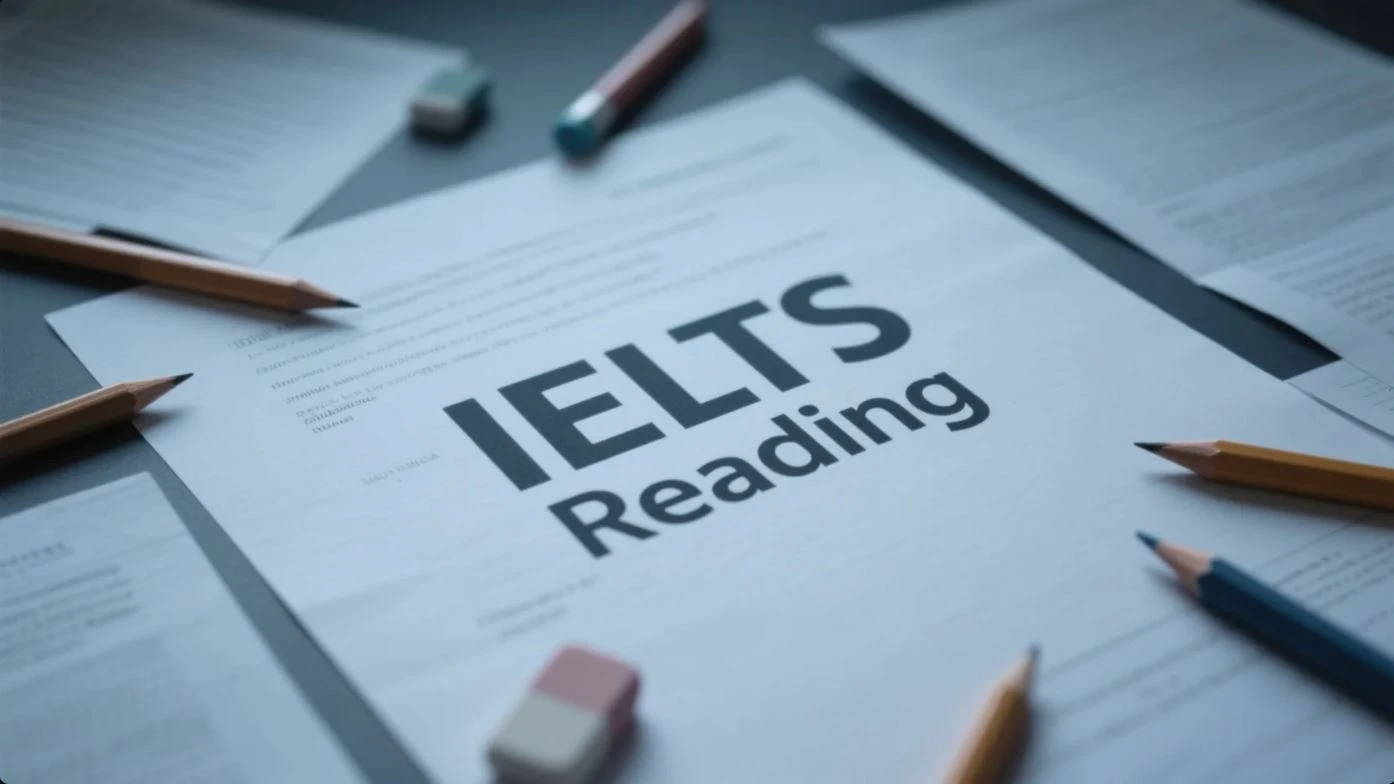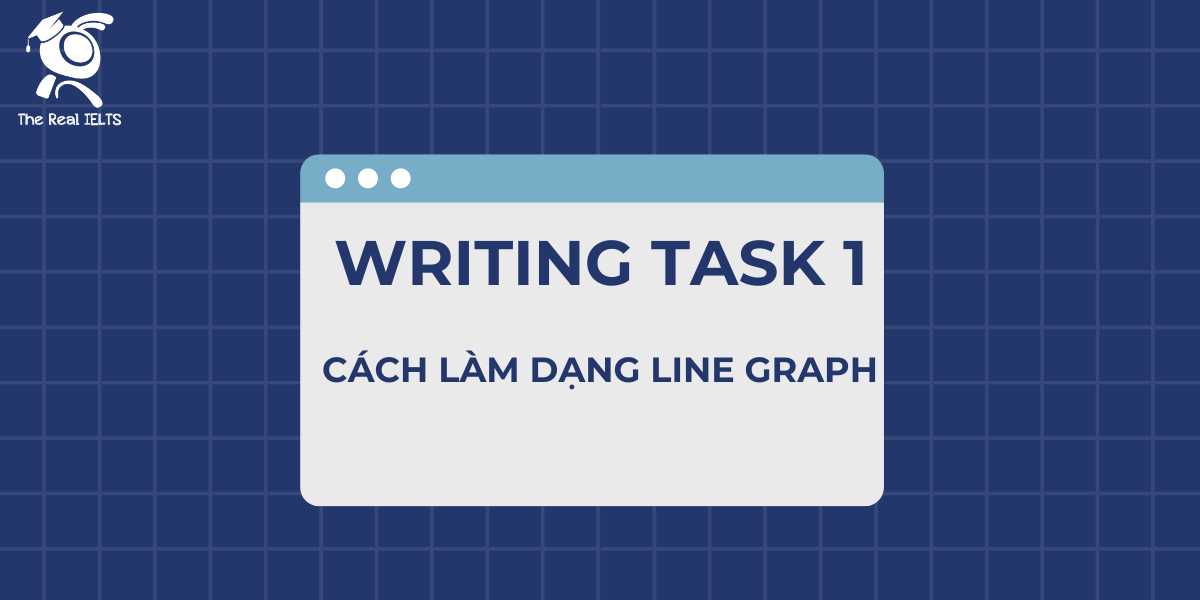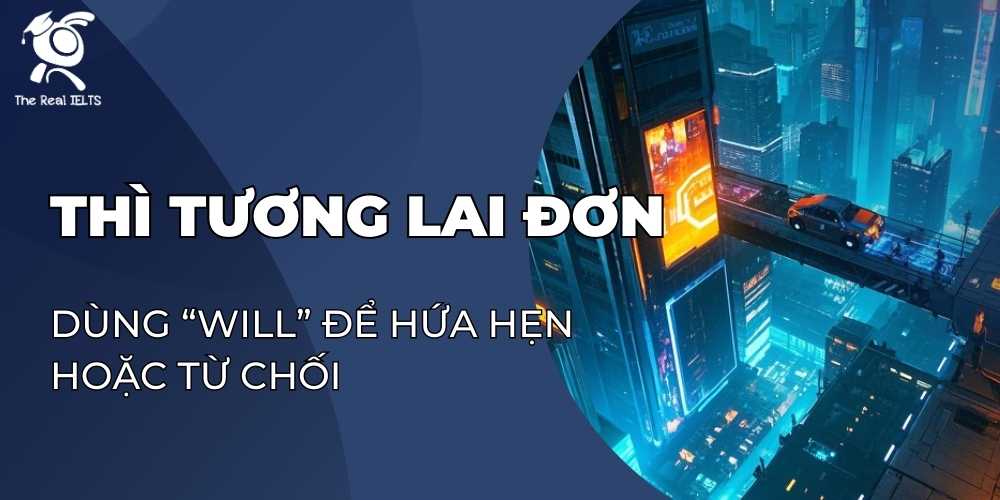Kỹ năng đọc hiểu trong kỳ thi IELTS đòi hỏi sự nhạy bén và chiến lược tiếp cận hiệu quả. IELTS Reading, với các bài đọc học thuật phức tạp, thử thách khả năng nắm bắt ý chính và chi tiết của thí sinh. Theo thống kê, hơn 70% thí sinh gặp khó khăn trong việc quản lý thời gian và xác định thông tin quan trọng. Việc luyện tập kỹ thuật skimming và scanning có thể nâng cao đáng kể band điểm, đặc biệt cho mục tiêu 7.0 trở lên.
Đọc thêm: IELTS Reading Urban Green Spaces, Renewable Energy, Online Education.
The Impact of Urban Green Spaces
Urban green spaces, such as parks and community gardens, play a vital role in improving the quality of life in cities. These areas provide residents with opportunities for recreation, exercise, and social interaction, which can enhance physical and mental well-being. Studies show that access to green spaces reduces stress levels and promotes relaxation, as exposure to nature has a calming effect on the human brain. In densely populated cities, where concrete structures dominate, green spaces offer a rare chance to connect with nature.
Many urban green spaces are designed with sustainability in mind. For example, some parks incorporate rainwater harvesting systems to maintain plants, reducing reliance on municipal water supplies. Additionally, trees and shrubs in these areas help lower city temperatures by providing shade and reducing the urban heat island effect. This contributes to energy savings, as buildings nearby require less air conditioning.
However, maintaining urban green spaces can be challenging. Budget constraints often limit the development and upkeep of these areas, leading to neglected parks in some cities. Community involvement is crucial, as local volunteers often assist in planting trees or cleaning public spaces. Despite these efforts, not all cities prioritize green spaces equally, and some urban areas lack sufficient parks due to competing demands for land development.
Green spaces also support biodiversity by providing habitats for birds, insects, and small mammals. This ecological benefit is increasingly valued as cities aim to balance development with environmental conservation.
Questions
- Urban green spaces improve both physical and mental health of city residents.
- All urban green spaces use rainwater harvesting systems to water plants.
- Trees in parks help reduce the need for air conditioning in nearby buildings.
- Most cities have enough funding to maintain their green spaces effectively.
- Urban green spaces contribute to biodiversity by attracting large mammals.
Answers
- True
- False
- True
- False
- Not Given
Explanations
- True: Đoạn văn đề cập rằng các không gian xanh đô thị cung cấp cơ hội cho việc giải trí, tập thể dục và tương tác xã hội, từ đó cải thiện sức khỏe thể chất và tinh thần. Cụ thể, nó nói rằng tiếp cận với không gian xanh làm giảm mức độ căng thẳng và thúc đẩy thư giãn, hỗ trợ cho tuyên bố này.
- False: Đoạn văn chỉ nói rằng “một số công viên” (some parks) sử dụng hệ thống thu gom nước mưa để tưới cây, không phải tất cả các không gian xanh đô thị. Từ “all” trong câu hỏi không chính xác với thông tin trong bài.
- True: Đoạn văn giải thích rằng cây cối và bụi rậm trong không gian xanh giúp giảm nhiệt độ thành phố bằng cách cung cấp bóng râm và giảm hiệu ứng đảo nhiệt đô thị, dẫn đến tiết kiệm năng lượng vì các tòa nhà gần đó cần ít điều hòa hơn.
- False: Đoạn văn nêu rõ rằng hạn chế về ngân sách thường giới hạn việc phát triển và bảo trì các không gian xanh, dẫn đến việc một số công viên bị bỏ bê. Điều này mâu thuẫn với ý rằng hầu hết các thành phố có đủ kinh phí.
- Not Given: Đoạn văn đề cập rằng không gian xanh hỗ trợ đa dạng sinh học bằng cách cung cấp môi trường sống cho chim, côn trùng và động vật có vú nhỏ, nhưng không có thông tin nào về việc thu hút “động vật có vú lớn” như câu hỏi đề cập.
The Rise of Renewable Energy
Renewable energy sources, such as solar, wind, and hydropower, are transforming the global energy landscape. Unlike fossil fuels, which release harmful greenhouse gases, renewable sources produce little to no emissions, making them crucial for combating climate change. In 2023, solar and wind energy accounted for 12% of global electricity production, a significant rise from just 5% a decade earlier. This growth is driven by technological advancements, such as more efficient solar panels and larger wind turbines, which have reduced costs.
Governments worldwide are supporting this shift through subsidies and policies. For instance, many countries offer tax incentives to encourage the installation of solar panels on homes and businesses. However, challenges remain, including the high initial costs of infrastructure and the intermittent nature of some renewable sources, like wind, which depends on weather conditions. Energy storage systems, such as batteries, are being developed to address this issue by storing excess power for use when production is low.
Renewable energy also creates economic opportunities. The sector has generated millions of jobs globally, particularly in manufacturing and installation. Developing nations, with abundant natural resources like sunlight, are increasingly investing in renewables to meet growing energy demands sustainably. Despite these benefits, critics argue that the land required for large-scale projects, such as wind farms, can disrupt local ecosystems. Balancing environmental and economic priorities remains a key challenge for the future of renewable energy.
Questions
- What is a key benefit of renewable energy sources compared to fossil fuels?
A. Higher energy output
B. Lower greenhouse gas emissions
C. Cheaper installation costs
D. Greater availability worldwide - What has contributed to the growth of renewable energy? (Choose 2 correct answers)
A. Increased government subsidies
B. Improved technology
C. Reduced land requirements
D. Lower demand for electricity - Why is wind energy considered intermittent?
A. It is only available at night
B. It depends on weather conditions
C. It requires constant maintenance
D. It is more expensive than solar - What is one economic impact of renewable energy?
A. Increased fossil fuel production
B. Creation of jobs
C. Higher energy costs for consumers
D. Reduced government spending - What concern do critics have about large-scale renewable energy projects?
A. They are too expensive to maintain
B. They harm local ecosystems
C. They reduce job opportunities
D. They rely on fossil fuels
Answers
- Câu 1: B
- Câu 2: A và B
- Câu 3: B
- Câu 4: B
- Câu 5: B
Explanations
- Câu 1: B
- Giải thích: Đoạn văn nêu rõ rằng năng lượng tái tạo tạo ra ít hoặc không có khí thải nhà kính, không giống như nhiên liệu hóa thạch, giúp chống biến đổi khí hậu. Điều này hỗ trợ đáp án B. Các lựa chọn khác không được đề cập (A, C) hoặc không chính xác (D, vì đoạn văn không so sánh tính sẵn có).
- Câu 2: A và B
- Giải thích: Đoạn văn đề cập rằng sự tăng trưởng của năng lượng tái tạo được thúc đẩy bởi các chính sách hỗ trợ của chính phủ như trợ cấp (subsidies) và tiến bộ công nghệ (technological advancements) như tấm pin mặt trời hiệu quả hơn. Đáp án C sai vì đoạn văn không nói đất đai cần ít hơn, và D sai vì không đề cập đến giảm nhu cầu điện.
- Câu 3: B
- Giải thích: Đoạn văn giải thích rằng năng lượng gió bị gián đoạn vì phụ thuộc vào điều kiện thời tiết. A sai vì không có thông tin về việc chỉ có vào ban đêm; C và D không được đề cập liên quan đến tính gián đoạn.
- Câu 4: B
- Giải thích: Đoạn văn nêu rằng ngành năng lượng tái tạo đã tạo ra hàng triệu việc làm toàn cầu, đặc biệt trong sản xuất và lắp đặt. A, C và D không được đề cập hoặc mâu thuẫn với thông tin trong bài.
- Câu 5: B
- Giải thích: Đoạn văn đề cập rằng các nhà phê bình lo ngại rằng các dự án quy mô lớn như trang trại gió có thể làm gián đoạn hệ sinh thái địa phương. A, C và D không được đề cập hoặc không liên quan đến lo ngại của các nhà phê bình.
The Role of Technology in Education
Technology has transformed education, sparking debates about its benefits and drawbacks. Many educators believe that digital tools, such as tablets and online platforms, enhance learning by providing interactive and personalized experiences. For example, apps that adapt to a student’s progress allow tailored lessons, which some argue improve academic outcomes. Schools in many countries have integrated these tools, claiming they make lessons more engaging than traditional methods.
However, critics argue that over-reliance on technology can harm students’ critical thinking skills. They suggest that excessive screen time may reduce attention spans, as students become accustomed to instant information access. Some teachers express concern that technology distracts from in-depth learning, favoring quick answers over thoughtful analysis. Despite these concerns, evidence suggests that when used appropriately, technology can complement traditional teaching rather than replace it.
Another perspective highlights the accessibility technology brings. Online courses enable students in remote areas to access quality education, a benefit widely praised by educational reformers. Yet, some skeptics point out that not all students have reliable internet or devices, creating inequalities in access. This digital divide remains a significant challenge, particularly in developing regions.
Supporters of technology in education also emphasize its role in preparing students for future careers, where digital skills are essential. They argue that familiarity with technology gives students a competitive edge in the job market. While debates continue, most agree that a balanced approach, combining technology with traditional methods, is key to maximizing educational benefits.
Questions
- Many educators believe technology improves learning by making it more interactive.
- Critics claim that technology reduces students’ ability to focus for long periods.
- Technology is considered the only effective way to teach students in modern schools.
- Online courses are believed to provide equal access to education for all students.
- Students using technology in education are guaranteed high-paying jobs in the future.
Answers
- Yes
- Yes
- No
- No
- Not Given
Explanations
- Yes: Đoạn văn nêu rằng nhiều nhà giáo dục tin rằng các công cụ số, như máy tính bảng và nền tảng trực tuyến, nâng cao việc học bằng cách cung cấp trải nghiệm tương tác và cá nhân hóa. Điều này phù hợp với quan điểm trong câu hỏi.
- Yes: Đoạn văn đề cập rằng các nhà phê bình cho rằng việc sử dụng công nghệ quá mức có thể làm giảm khả năng tập trung của học sinh, vì họ quen với việc tiếp cận thông tin ngay lập tức, hỗ trợ quan điểm trong câu hỏi.
- No: Đoạn văn nói rằng công nghệ có thể bổ sung cho phương pháp giảng dạy truyền thống, chứ không thay thế hoàn toàn. Quan điểm rằng công nghệ là cách duy nhất hiệu quả để dạy học không được ủng hộ, vì bài nhấn mạnh cách tiếp cận cân bằng.
- No: Mặc dù đoạn văn đề cập rằng các khóa học trực tuyến giúp học sinh ở vùng xa tiếp cận giáo dục chất lượng, nhưng nó cũng chỉ ra rằng không phải tất cả học sinh đều có internet hoặc thiết bị đáng tin cậy, dẫn đến bất bình đẳng trong tiếp cận, mâu thuẫn với quan điểm “bình đẳng cho tất cả”.
- Not Given: Đoạn văn nói rằng công nghệ giúp học sinh làm quen với các kỹ năng số, mang lại lợi thế cạnh tranh trong thị trường việc làm, nhưng không đề cập đến việc đảm bảo công việc lương cao, nên thông tin này không được cung cấp.
The Evolution of Public Transportation
(A) Public transportation has undergone significant changes over the past century. In the early 1900s, trams and horse-drawn carriages dominated urban transport. These were gradually replaced by buses and trains as cities expanded and technology advanced. By the mid-20th century, diesel-powered buses became common, offering a more flexible and cost-effective option compared to trams, which required fixed tracks.
(B) The environmental impact of public transportation has become a major concern in recent decades. Diesel buses, while efficient for their time, contribute to air pollution through carbon emissions. As a result, many cities have introduced electric buses, which produce zero emissions and are quieter. In 2022, over 20% of new buses in Europe were electric, reflecting a shift toward greener transport solutions.
(C) Technology has also improved the efficiency of public transportation. Modern systems use real-time tracking apps, allowing passengers to monitor bus or train arrivals. Smart ticketing systems, such as contactless payments, have streamlined the boarding process, reducing delays. These innovations have made public transport more user-friendly and appealing to commuters.
(D) Despite these advancements, challenges remain. Overcrowding during peak hours is a persistent issue in many cities, leading to discomfort and delays. Additionally, the high cost of upgrading infrastructure, such as building new rail lines or maintaining electric bus fleets, poses financial burdens for governments. Public transport systems must balance accessibility, sustainability, and affordability to meet growing urban demands.
Questions
- A statistic about the adoption of electric buses in Europe.
- The replacement of trams with more flexible transport options.
- The introduction of apps to track public transport in real time.
- The issue of overcrowding during busy periods.
- The environmental disadvantage of diesel-powered buses.
Answers
- B
- A
- C
- D
- B
Explanations
- B: Đoạn B đề cập đến số liệu thống kê rằng vào năm 2022, hơn 20% xe buýt mới ở châu Âu là xe buýt điện. Đây là thông tin trực tiếp liên quan đến việc áp dụng xe buýt điện, phù hợp với mô tả câu hỏi.
- A: Đoạn A giải thích rằng xe buýt và tàu hỏa đã dần thay thế xe điện (trams) và xe ngựa, với xe buýt chạy bằng diesel trở nên phổ biến vào giữa thế kỷ 20 vì tính linh hoạt và chi phí hiệu quả hơn so với xe điện cần đường ray cố định.
- C: Đoạn C nêu rõ rằng các hệ thống giao thông công cộng hiện đại sử dụng ứng dụng theo dõi thời gian thực để hành khách theo dõi thời gian đến của xe buýt hoặc tàu hỏa, khớp với mô tả về ứng dụng theo dõi.
- D: Đoạn D đề cập đến vấn đề quá tải vào giờ cao điểm, gây ra sự bất tiện và chậm trễ ở nhiều thành phố, trực tiếp liên quan đến mô tả về tình trạng quá tải.
- B: Đoạn B chỉ ra rằng xe buýt chạy bằng diesel góp phần gây ô nhiễm không khí thông qua lượng khí thải carbon, đây là nhược điểm về môi trường của loại xe này, phù hợp với mô tả câu hỏi.
The Impact of Social Media on Society
(A) Social media platforms have reshaped how people communicate, enabling instant global connections. Platforms like Twitter and Instagram allow users to share ideas, news, and personal updates in real time, fostering a sense of community across borders. This has made information more accessible, with millions engaging daily in online discussions.
(B) However, social media’s influence on mental health is a growing concern. Studies suggest that excessive use can lead to anxiety and low self-esteem, particularly among teenagers who compare themselves to idealized online images. Experts recommend limiting screen time to mitigate these negative effects.
(C) Businesses have also capitalized on social media for marketing. Companies use targeted advertising to reach specific audiences, leveraging user data to tailor promotions. This strategy has proven highly effective, with small businesses gaining visibility without the need for large budgets.
(D) Social media has played a significant role in political movements. Activists use platforms to organize protests and raise awareness about social issues, as seen in global campaigns like #MeToo. These movements have amplified marginalized voices, though they sometimes face censorship or misinformation challenges.
(E) Despite its benefits, social media can spread false information rapidly. Misleading posts or fake news can influence public opinion before corrections are made. Efforts to combat this include fact-checking initiatives, but their success is limited by the sheer volume of content shared daily.
Headings
- Enhancing Global Communication
- Promoting Educational Content
- Negative Effects on Mental Health
- Supporting Business Marketing
- Driving Political Activism
- Challenges of Misinformation
- Improving Workplace Collaboration
- Encouraging Physical Activity
Questions
- Which heading best matches the content of paragraph A?
- Which heading best matches the content of paragraph B?
- Which heading best matches the content of paragraph C?
- Which heading best matches the content of paragraph D?
- Which heading best matches the content of paragraph E?
Answers
- Paragraph A: Heading 1
- Paragraph B: Heading 3
- Paragraph C: Heading 4
- Paragraph D: Heading 5
- Paragraph E: Heading 6
Explanations
- Paragraph A: Heading 1 (Enhancing Global Communication)
- Giải thích: Đoạn A tập trung vào việc mạng xã hội đã thay đổi cách con người giao tiếp, cho phép kết nối toàn cầu tức thời và chia sẻ thông tin, ý tưởng qua các nền tảng như Twitter và Instagram. Tiêu đề “Enhancing Global Communication” tóm tắt chính xác ý chính này. Các tiêu đề gây nhiễu như “Promoting Educational Content” (2) hoặc “Improving Workplace Collaboration” (7) không phù hợp vì đoạn A không đề cập đến giáo dục hay hợp tác công việc.
- Paragraph B: Heading 3 (Negative Effects on Mental Health)
- Giải thích: Đoạn B thảo luận về tác động tiêu cực của mạng xã hội đến sức khỏe tâm lý, như lo âu và tự ti, đặc biệt ở thanh thiếu niên. Tiêu đề “Negative Effects on Mental Health” phản ánh đúng nội dung này. Các tiêu đề như “Encouraging Physical Activity” (8) không phù hợp vì đoạn văn không liên quan đến hoạt động thể chất.
- Paragraph C: Heading 4 (Supporting Business Marketing)
- Giải thích: Đoạn C mô tả cách doanh nghiệp sử dụng mạng xã hội để quảng cáo nhắm mục tiêu và tăng khả năng tiếp cận mà không cần ngân sách lớn. Tiêu đề “Supporting Business Marketing” phù hợp nhất. Các tiêu đề như “Promoting Educational Content” (2) không liên quan vì đoạn văn không đề cập đến giáo dục.
- Paragraph D: Heading 5 (Driving Political Activism)
- Giải thích: Đoạn D nhấn mạnh vai trò của mạng xã hội trong các phong trào chính trị, như tổ chức biểu tình và nâng cao nhận thức qua các chiến dịch như #MeToo. Tiêu đề “Driving Political Activism” tóm tắt chính xác ý này. Các tiêu đề như “Challenges of Misinformation” (6) không phù hợp vì đoạn D chỉ đề cập thoáng qua vấn đề thông tin sai lệch.
- Paragraph E: Heading 6 (Challenges of Misinformation)
- Giải thích: Đoạn E tập trung vào vấn đề mạng xã hội lan truyền thông tin sai lệch nhanh chóng và những nỗ lực kiểm tra sự thật gặp khó khăn. Tiêu đề “Challenges of Misinformation” phù hợp nhất. Các tiêu đề như “Improving Workplace Collaboration” (7) không liên quan vì đoạn văn không đề cập đến hợp tác công việc.
The Importance of Urban Farming
Urban farming has emerged as a sustainable solution to address food security in cities. By transforming vacant lots, rooftops, and backyards into productive gardens, urban farming provides fresh produce to communities. This practice reduces the need for long-distance food transportation, which lowers carbon emissions and supports environmental sustainability. In 2023, urban farms in major cities supplied up to 10% of local vegetable demand, benefiting both residents and local economies.
This approach also promotes community engagement. Urban farming projects often involve local volunteers who work together to plant and harvest crops. These initiatives foster social bonds and educate participants about sustainable agriculture. Schools in urban areas have adopted farming programs to teach children about nutrition and environmental stewardship.
However, urban farming faces challenges. Limited space in densely populated cities restricts the scale of production, making it difficult to meet large-scale demand. Additionally, soil contamination in some urban areas poses health risks, requiring careful testing and remediation before cultivation can begin.
Technological innovations are helping overcome these obstacles. Hydroponics, a method of growing plants without soil, allows farming in small spaces and reduces water usage by up to 90% compared to traditional methods. These advancements make urban farming more viable, though high setup costs can deter widespread adoption. Despite these hurdles, urban farming continues to grow, offering a model for sustainable living in cities.
Sentence Beginnings
- Urban farming reduces carbon emissions by
- Community involvement in urban farming
- Limited space in cities
- Hydroponics enables urban farming
- Soil contamination in urban areas
Sentence Endings
A. restricts the scale of food production.
B. requires testing before farming can start.
C. provides fresh vegetables to local markets.
D. fosters social connections among volunteers.
E. eliminating the need for soil.
F. increases the demand for traditional farming.
G. reducing long-distance food transportation.
Answers
- Câu 1: A → G
- Câu 2: B → D
- Câu 3: C → A
- Câu 4: D → E
- Câu 5: E → B
Explanations
- Câu 1: A → G (Urban farming reduces carbon emissions by reducing long-distance food transportation)
- Giải thích: Đoạn văn đầu tiên nêu rằng nông nghiệp đô thị giảm nhu cầu vận chuyển thực phẩm đường dài, từ đó làm giảm lượng khí thải carbon. Phần kết thúc G phù hợp về ý nghĩa vì nó trực tiếp đề cập đến việc giảm vận chuyển thực phẩm. Lựa chọn F gây nhiễu nhưng sai vì bài không nói nông nghiệp đô thị tăng nhu cầu nông nghiệp truyền thống.
- Câu 2: B → D (Community involvement in urban farming fosters social connections among volunteers)
- Giải thích: Đoạn thứ hai đề cập rằng các dự án nông nghiệp đô thị liên quan đến tình nguyện viên địa phương, giúp xây dựng mối quan hệ xã hội. Phần kết thúc D phản ánh đúng ý này. Lựa chọn C không phù hợp vì không liên quan đến sự tham gia của cộng đồng.
- Câu 3: C → A (Limited space in cities restricts the scale of food production)
- Giải thích: Đoạn thứ ba chỉ ra rằng không gian hạn chế ở các thành phố đông dân cản trở quy mô sản xuất của nông nghiệp đô thị. Phần kết thúc A tóm tắt chính xác ý này. Lựa chọn F không đúng vì không liên quan đến vấn đề không gian.
- Câu 4: D → E (Hydroponics enables urban farming by eliminating the need for soil)
- Giải thích: Đoạn cuối giải thích rằng thủy canh (hydroponics) cho phép trồng trọt mà không cần đất, phù hợp với không gian nhỏ. Phần kết thúc E đúng với thông tin này. Lựa chọn B không phù hợp vì không liên quan đến thủy canh.
- Câu 5: E → B (Soil contamination in urban areas requires testing before farming can start)
- Giải thích: Đoạn thứ ba đề cập rằng đất bị ô nhiễm ở một số khu vực đô thị gây rủi ro sức khỏe và cần kiểm tra trước khi canh tác. Phần kết thúc B khớp với ý này. Lựa chọn C không đúng vì không đề cập đến vấn đề ô nhiễm đất.
The Benefits of Green Roofs
Green roofs, which involve growing plants on building rooftops, are gaining popularity in urban areas. These living roofs provide insulation, reducing energy costs for heating and cooling by up to 20%. They also absorb rainwater, decreasing the risk of urban flooding. In cities like Singapore, green roofs cover over 120 hectares of building surfaces, contributing to sustainable urban development.
Beyond environmental benefits, green roofs enhance urban aesthetics. They create visually appealing spaces, transforming concrete-dominated skylines into greener landscapes. Many residents report that these roofs improve their well-being, offering tranquil areas for relaxation in busy cities. Some buildings incorporate community gardens on rooftops, fostering social interaction among residents.
Green roofs also support biodiversity. They provide habitats for birds, insects, and pollinators like bees, which are vital for food production. In 2022, a study in London found that green roofs increased local bee populations by 15%, aiding urban ecosystems. However, the high installation cost of green roofs, often exceeding $100 per square meter, limits their widespread adoption.
Maintenance is another challenge. Green roofs require regular watering and weeding to sustain plant health, which can be labor-intensive. Innovations like automated irrigation systems are helping address this issue, making maintenance more manageable. Despite these challenges, green roofs remain a promising solution for creating sustainable, livable cities, as they balance environmental, social, and economic benefits.
Questions
- Green roofs help reduce energy costs by providing ________.
- In Singapore, green roofs cover over ________ of building surfaces.
- Green roofs create ________ spaces that improve residents’ well-being.
- A 2022 study in London showed that green roofs increased ________ by 15%.
- The high ________ of green roofs limits their widespread use.
Answers
- insulation
- 120 hectares
- tranquil areas
- bee populations
- installation cost
Explanations
- insulation
- Giải thích: Đoạn đầu tiên nêu rằng mái nhà xanh cung cấp “insulation” (tính cách nhiệt), giúp giảm chi phí năng lượng cho sưởi ấm và làm mát tới 20%. Từ “insulation” được lấy nguyên văn từ bài. Các từ khác như “plants” hoặc “rooftops” không phù hợp vì không trực tiếp liên quan đến việc giảm chi phí năng lượng.
- 120 hectares
- Giải thích: Đoạn đầu tiên đề cập rằng ở Singapore, mái nhà xanh bao phủ hơn “120 hectares” bề mặt tòa nhà. Đây là thông tin cụ thể, lấy nguyên văn từ bài. Các số liệu khác không được nhắc đến, nên không thể thay thế.
- tranquil areas
- Giải thích: Đoạn thứ hai nói rằng mái nhà xanh cung cấp “tranquil areas for relaxation” (khu vực yên tĩnh để thư giãn), cải thiện sức khỏe tinh thần của cư dân. Cụm từ “tranquil areas” được lấy nguyên văn và phù hợp với ngữ cảnh. Các cụm như “community gardens” không phù hợp vì không trực tiếp đề cập đến sức khỏe tinh thần.
- bee populations
- Giải thích: Đoạn thứ ba đề cập rằng một nghiên cứu năm 2022 ở London cho thấy mái nhà xanh tăng “local bee populations” (quần thể ong địa phương) lên 15%. Cụm từ này được lấy nguyên văn. Các từ như “birds” hoặc “insects” không chính xác vì nghiên cứu chỉ đề cập cụ thể đến ong.
- installation cost
- Giải thích: Đoạn thứ ba nêu rằng chi phí lắp đặt cao (“installation cost”) của mái nhà xanh, thường vượt quá $100 mỗi mét vuông, hạn chế việc áp dụng rộng rãi. Cụm từ này được lấy nguyên văn. Các cụm như “maintenance cost” không phù hợp vì bài nhấn mạnh chi phí lắp đặt, không phải bảo trì, là rào cản chính.
The Role of Artificial Intelligence in Healthcare
Artificial intelligence (AI) is revolutionizing healthcare by improving efficiency and patient outcomes. AI-powered diagnostic tools analyze medical images, such as X-rays, to detect diseases like cancer with greater accuracy than traditional methods. In 2023, AI systems identified early-stage lung cancer in 30% more cases than human radiologists alone. These tools save time, allowing doctors to focus on treatment plans.
AI also enhances patient care through personalized medicine. By analyzing genetic data, AI can recommend tailored treatments for conditions like diabetes, improving recovery rates. For instance, AI-driven apps monitor blood sugar levels in real time, helping patients manage their condition more effectively.
However, integrating AI into healthcare faces challenges. Data privacy is a significant concern, as AI systems require vast amounts of patient information to function effectively. Strict regulations, such as those in the European Union, aim to protect sensitive medical data but can slow AI adoption. Additionally, the high cost of developing AI tools, often exceeding millions of dollars, limits access in low-income regions.
Despite these hurdles, AI’s potential to transform healthcare is undeniable. It supports doctors by automating routine tasks, such as analyzing lab results, and improves hospital efficiency. As technology advances, AI is expected to play a larger role in preventive care, predicting health risks before symptoms appear, thus saving lives and reducing healthcare costs.
Summary
Artificial intelligence is transforming healthcare by improving diagnostic accuracy and patient care. AI tools can detect 1.________ with higher precision than traditional methods. They also support 2.________ by recommending tailored treatments based on genetic data. However, challenges like 3.________ slow down AI integration in healthcare systems. The 4.________ of developing these tools also restricts their use in poorer regions. Despite this, AI enhances 5.________ by automating tasks and predicting health risks.
Word Options
A. data privacy
B. hospital efficiency
C. lung cancer
D. medical training
E. personalized medicine
F. government funding
G. high cost
H. surgical procedures
Answers
- Câu 1: lung cancer
- Câu 2: personalized medicine
- Câu 3: data privacy
- Câu 4: high cost
- Câu 5: hospital efficiency
Explanations
- Câu 1: lung cancer
- Giải thích: Đoạn văn đầu tiên nêu rằng các công cụ AI phân tích hình ảnh y tế để phát hiện bệnh như “lung cancer” (ung thư phổi) với độ chính xác cao hơn, cụ thể là phát hiện thêm 30% các ca ung thư phổi giai đoạn đầu. Từ “lung cancer” được lấy nguyên văn từ bài. Lựa chọn H (surgical procedures) không phù hợp vì bài không đề cập đến phẫu thuật.
- Câu 2: personalized medicine
- Giải thích: Đoạn thứ hai đề cập rằng AI nâng cao chăm sóc bệnh nhân thông qua “personalized medicine” (y học cá nhân hóa) bằng cách phân tích dữ liệu di truyền để đề xuất phương pháp điều trị phù hợp. Cụm từ này được lấy nguyên văn. Lựa chọn D (medical training) không đúng vì bài không nói về đào tạo y tế.
- Câu 3: data privacy
- Giải thích: Đoạn thứ ba chỉ ra rằng “data privacy” (quyền riêng tư dữ liệu) là một mối quan ngại lớn, làm chậm việc tích hợp AI vào y tế. Cụm từ này được lấy nguyên văn. Lựa chọn F (government funding) không phù hợp vì bài không đề cập đến tài trợ chính phủ.
- Câu 4: high cost
- Giải thích: Đoạn thứ ba nêu rằng “high cost” (chi phí cao) của việc phát triển các công cụ AI, thường vượt quá hàng triệu đô la, hạn chế việc sử dụng ở các khu vực thu nhập thấp. Cụm từ này được lấy nguyên văn. Lựa chọn D (medical training) không liên quan vì không được đề cập.
- Câu 5: hospital efficiency
- Giải thích: Đoạn cuối nói rằng AI cải thiện “hospital efficiency” (hiệu quả bệnh viện) bằng cách tự động hóa các công việc như phân tích kết quả xét nghiệm. Cụm từ này được lấy nguyên văn. Lựa chọn H (surgical procedures) không phù hợp vì bài không đề cập đến phẫu thuật.
The Process of Solar Energy Generation
Solar energy generation is a sustainable method of producing electricity using sunlight. The process begins with solar panels, which are made up of photovoltaic cells. These cells absorb sunlight and convert it into direct current (DC) electricity through a process called the photovoltaic effect. This DC electricity is not suitable for most household appliances, so it is sent to an inverter.
The inverter plays a crucial role by transforming DC electricity into alternating current (AC) electricity, which is compatible with standard electrical systems. Once converted, the AC electricity flows to a distribution board, which allocates power to various parts of a building, such as lights and appliances.
If the solar panels generate more electricity than needed, the excess power can be stored in batteries for later use, such as during nighttime or cloudy days. Alternatively, in grid-connected systems, surplus electricity is fed into the power grid, allowing households to earn credits from utility companies.
To monitor the system’s performance, a smart meter is often installed. This device tracks the amount of electricity generated and consumed, providing data to optimize energy use. Solar energy systems are increasingly popular due to their environmental benefits and ability to reduce electricity bills, though high installation costs remain a barrier for some.
Diagram Description
The diagram illustrates the process of solar energy generation in a household system. It includes the following components and steps, with five labeled positions (A–E) to be completed:
- Position A: The component that captures sunlight to produce electricity.
- Position B: The process that converts sunlight into electricity.
- Position C: The device that converts DC electricity to AC electricity.
- Position D: The component that distributes electricity to household appliances.
- Position E: The device that monitors electricity production and consumption.
Questions
- Label Position A: The component that captures sunlight to produce electricity.
- Label Position B: The process that converts sunlight into electricity.
- Label Position C: The device that converts DC electricity to AC electricity.
- Label Position D: The component that distributes electricity to household appliances.
- Label Position E: The device that monitors electricity production and consumption.
Answers
- Position A: solar panels
- Position B: photovoltaic effect
- Position C: inverter
- Position D: distribution board
- Position E: smart meter
Explanations
- Position A: solar panels
- Giải thích: Đoạn văn đầu tiên nêu rằng quá trình bắt đầu với “solar panels” (tấm pin mặt trời), được tạo thành từ các tế bào quang điện, hấp thụ ánh sáng mặt trời để tạo ra điện. Cụm từ “solar panels” được lấy nguyên văn từ bài và phù hợp với mô tả về bộ phận thu nhận ánh sáng mặt trời.
- Position B: photovoltaic effect
- Giải thích: Đoạn đầu tiên giải thích rằng các tế bào quang điện trong tấm pin mặt trời chuyển đổi ánh sáng mặt trời thành điện trực tiếp (DC) thông qua “photovoltaic effect” (hiệu ứng quang điện). Cụm từ này được lấy nguyên văn và đúng với mô tả về quá trình chuyển đổi ánh sáng thành điện.
- Position C: inverter
- Giải thích: Đoạn thứ hai đề cập rằng “inverter” (bộ biến tần) chuyển đổi điện trực tiếp (DC) thành điện xoay chiều (AC), phù hợp với các hệ thống điện tiêu chuẩn. Từ “inverter” được lấy nguyên văn và khớp với mô tả về thiết bị chuyển đổi DC thành AC.
- Position D: distribution board
- Giải thích: Đoạn thứ hai nêu rằng điện xoay chiều (AC) chảy đến “distribution board” (bảng phân phối), phân bổ điện cho các thiết bị trong tòa nhà như đèn và đồ gia dụng. Cụm từ “distribution board” được lấy nguyên văn và phù hợp với mô tả.
- Position E: smart meter
- Giải thích: Đoạn cuối đề cập rằng “smart meter” (đồng hồ thông minh) được lắp đặt để theo dõi lượng điện sản xuất và tiêu thụ. Cụm từ này được lấy nguyên văn và phù hợp với mô tả về thiết bị giám sát.
The Growth of Telecommuting
Telecommuting, or working from home using digital tools, has become increasingly common in recent years. By 2023, approximately 25% of employees in developed countries worked remotely at least part-time, a trend accelerated by advancements in video conferencing and cloud computing. This shift allows workers to save time and money on commuting, with studies estimating an average annual saving of $4,000 per employee on transport costs.
Companies also benefit from telecommuting. Remote work reduces the need for large office spaces, cutting operational costs by up to 30% for some businesses. Additionally, employees report higher job satisfaction due to flexible schedules, which can improve productivity. In a 2022 survey, 60% of remote workers said they felt more focused when working from home.
However, telecommuting presents challenges. Many employees struggle with work-life balance, as the boundaries between professional and personal life blur. Distractions at home, such as household chores, can also reduce efficiency. Employers address this by using project management software to monitor progress and maintain communication.
Telecommuting’s environmental impact is significant. By reducing daily commutes, it lowers carbon emissions, with an estimated reduction of 54 million tons of greenhouse gases annually worldwide. Despite these advantages, some industries, such as manufacturing, cannot adopt remote work due to the need for physical presence. As technology evolves, telecommuting is likely to expand further, reshaping the modern workplace.
Questions
NO MORE THAN THREE WORDS AND/OR A NUMBER
- What percentage of employees worked remotely part-time by 2023?
- How much can employees save annually on transport costs?
- By what percentage can businesses reduce operational costs?
- What do employees struggle with when telecommuting?
- How many tons of greenhouse gases are reduced annually?
Answers
- 25%
- $4,000
- 30%
- work-life balance
- 54 million
Explanations
- 25%
- Giải thích: Đoạn văn đầu tiên nêu rằng vào năm 2023, khoảng “25%” nhân viên ở các nước phát triển làm việc từ xa ít nhất bán thời gian. Con số này được lấy nguyên văn từ bài. Các con số khác không được đề cập trong ngữ cảnh này.
- $4,000
- Giải thích: Đoạn văn đầu tiên đề cập rằng các nghiên cứu ước tính nhân viên tiết kiệm trung bình “$4,000” mỗi năm cho chi phí đi lại. Số tiền này được lấy nguyên văn và phù hợp với câu hỏi. Các số liệu khác không liên quan.
- 30%
- Giải thích: Đoạn thứ hai nêu rằng làm việc từ xa giúp giảm chi phí vận hành cho doanh nghiệp tới “30%”. Con số này được lấy nguyên văn từ bài. Các phần trăm khác, như 25% hoặc 60%, liên quan đến các khía cạnh khác, không phải chi phí vận hành.
- work-life balance
- Giải thích: Đoạn thứ ba chỉ ra rằng nhiều nhân viên gặp khó khăn với “work-life balance” (cân bằng công việc và cuộc sống) khi làm việc từ xa. Cụm từ này được lấy nguyên văn. Các cụm như “household chores” không đủ tổng quát để trả lời câu hỏi.
- 54 million
- Giải thích: Đoạn thứ tư đề cập rằng làm việc từ xa giúp giảm “54 million” tấn khí nhà kính mỗi năm trên toàn cầu. Con số này được lấy nguyên văn. Không có số liệu nào khác liên quan đến khí nhà kính trong bài.
The Process of Recycling Plastic Waste
Plastic recycling is a critical process for managing waste and reducing environmental impact. The process begins with the collection of plastic waste, such as bottles and containers, from households and businesses. These items are then transported to recycling facilities, where they undergo sorting to separate different types of plastics, such as PET and HDPE, based on their chemical composition.
After sorting, the plastics are cleaned to remove contaminants like food residue or labels. This step is essential to ensure the quality of the recycled material. The cleaned plastics are then shredded into small flakes, which are easier to process. These flakes are melted and formed into pellets, a versatile material used to manufacture new products.
The final stage involves using the pellets to create new items, such as packaging, clothing, or construction materials. In 2023, approximately 9% of global plastic waste was recycled, with Europe leading at a 15% recycling rate. However, challenges remain, including the high energy costs of recycling and the difficulty of processing mixed plastics, which often reduces efficiency.
Recycling plastic reduces landfill waste and conserves natural resources by decreasing the need for virgin plastic production. Despite its benefits, public awareness and participation in recycling programs are crucial for increasing recycling rates. Innovations, such as chemical recycling, are being developed to improve the process and handle a wider range of plastics.
Completion Structure
Flowchart: The flowchart below outlines the stages of plastic recycling. Complete the flowchart by filling in the missing steps or components.
- Step 1: Collection of plastic waste → Step 2: ________ → Step 3: Cleaning → Step 4: ________ → Step 5: Melting into pellets → Step 6: ________
- Additional Information:
- Global recycling rate in 2023: ________
- Europe’s recycling rate: ________
Questions
NO MORE THAN THREE WORDS AND/OR A NUMBER
- Step 2: What happens to plastic waste after collection?
- Step 4: What is done to cleaned plastics?
- Step 6: What is made from pellets?
- What was the global plastic recycling rate in 2023?
- What was Europe’s plastic recycling rate in 2023?
Answers
- sorting
- shredded into flakes
- new products
- 9%
- 15%
Explanations
- sorting
- Giải thích: Đoạn văn đầu tiên nêu rằng sau khi thu gom, rác thải nhựa được vận chuyển đến các cơ sở tái chế, nơi chúng trải qua quá trình “sorting” (phân loại) để tách các loại nhựa khác nhau như PET và HDPE. Từ “sorting” được lấy nguyên văn và phù hợp với bước sau thu gom. Các từ như “cleaning” không đúng vì đó là bước tiếp theo.
- shredded into flakes
- Giải thích: Đoạn thứ hai đề cập rằng sau khi làm sạch, nhựa được “shredded into small flakes” (cắt nhỏ thành mảnh vụn) để dễ xử lý hơn. Cụm từ này được lấy nguyên văn và khớp với bước sau làm sạch. Các cụm như “melted” không phù hợp vì xảy ra sau đó.
- new products
- Giải thích: Đoạn thứ ba nêu rằng các viên nhựa (pellets) được sử dụng để tạo ra “new products” (sản phẩm mới) như bao bì, quần áo hoặc vật liệu xây dựng. Cụm từ này được lấy nguyên văn và phù hợp với bước cuối. Các cụm như “virgin plastic” không đúng vì không liên quan đến sản phẩm từ pellets.
- 9%
- Giải thích: Đoạn thứ ba đề cập rằng vào năm 2023, khoảng “9%” rác thải nhựa toàn cầu được tái chế. Con số này được lấy nguyên văn và trả lời chính xác câu hỏi. Các số liệu khác không liên quan đến tỷ lệ tái chế toàn cầu.
- 15%
- Giải thích: Đoạn thứ ba nêu rằng châu Âu dẫn đầu với tỷ lệ tái chế nhựa là “15%” vào năm 2023. Con số này được lấy nguyên văn và phù hợp với câu hỏi. Các con số như “9%” thuộc về tỷ lệ toàn cầu, không phải châu Âu.














